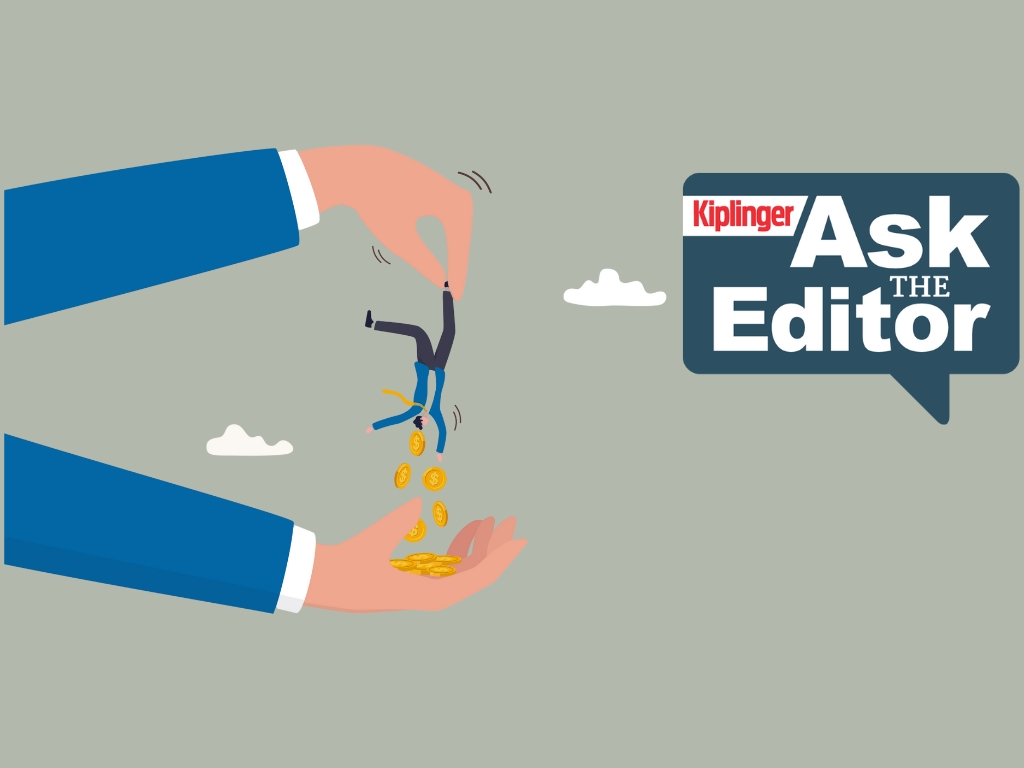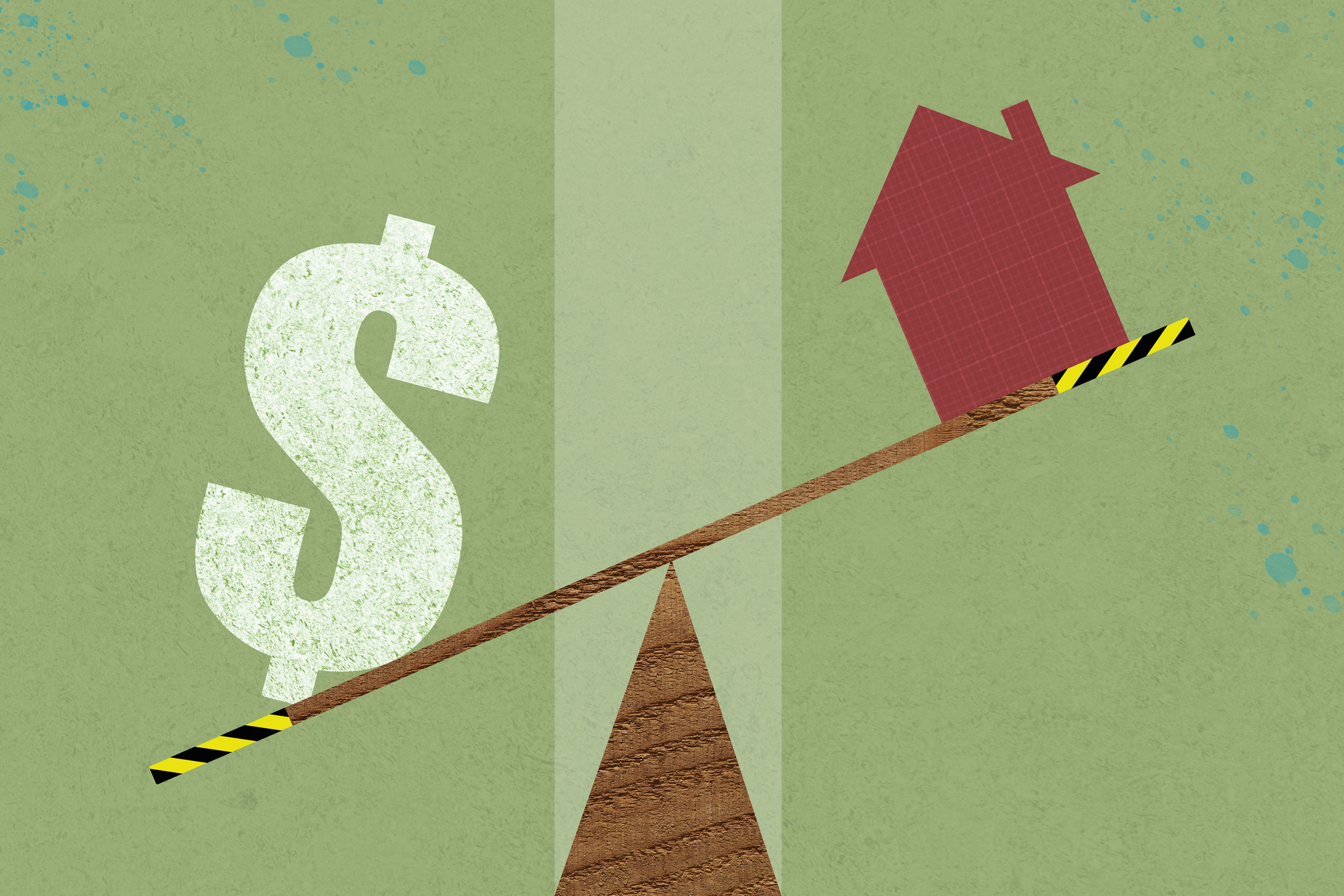Flood Insurance: What It Costs and Why You Need It
The average cost of a flood insurance policy is about $888 a year, but premiums vary depending on your property's flood risk.

Kimberly Lankford
Floods, hurricanes and seasonal rainfall can wreak havoc if you aren’t prepared and properly insured. You need more than some fresh batteries and bottled water. You need flood insurance. Homeowners insurance typically covers damage that comes from the top down — such as rain and wind damage — but it doesn't cover rising water and flooding.
Storms strain insurers that are expected to face claims for billions of dollars. This adds to a challenging year for the insurance industry that could result in higher premiums for customers: Florida has already seen insurers pull out of the housing market.
All of these factors make it vital for homeowners in areas prone to flooding to proactively seek flood insurance. Some private insurers offer flood coverage, and the Federal Emergency Management Agency (FEMA) administers the National Flood Insurance Program (NFIP) to ensure affordable access to flood insurance and help restore homes to pre-disaster conditions.
From just $107.88 $24.99 for Kiplinger Personal Finance
Become a smarter, better informed investor. Subscribe from just $107.88 $24.99, plus get up to 4 Special Issues

Sign up for Kiplinger’s Free Newsletters
Profit and prosper with the best of expert advice on investing, taxes, retirement, personal finance and more - straight to your e-mail.
Profit and prosper with the best of expert advice - straight to your e-mail.
How to get flood insurance and how much it costs
Flood insurance isn't covered by standard homeowners insurance policies, but your mortgage lender may require you to get flood insurance if you live in a high-risk area. Flood insurance can also be important even if it's not required, especially if you have a basement that could get flooded.
Most people can get flood insurance through the NFIP, and flood coverage can be purchased through an agent, from your current insurance company, or you can use the NFIP insurance provider locator. Coverage takes effect after a 30-day waiting period, so it's a good idea to buy a policy as soon as possible so you'll have the protection before the end of this year's storm season.
Flood insurance has an average cost of about $888 per year, according to Policy Genius, which used data from FEMA. But premiums vary depending on your property's flood risk and geography. For example, the average annual cost in Connecticut on the East Coast is $1,590, while it's $798 in North Dakota in the Midwest.
In 2021, FEMA implemented a new system for assessing flood risk called Risk Rating 2.0 and is adjusting premiums accordingly. The old methodology neither took the cost of rebuilding a home into consideration, nor did it reflect new data that includes more flood risk variables.
The data has been updated to include flood frequency and the damage from different types of floods, your distance to a water source and property characteristics such as elevation and the cost to rebuild.
These new risk assessments have now been factored into premium costs. Those with the greatest risk will see the largest increases. FEMA provides a breakdown of how Risk Rating 2.0 impacted premiums. You can view information about your state, county or zip code.
Flood insurance can be inexpensive for low-risk areas. For low-risk homes with a maximum coverage of $250,000 for the dwelling and $100,000 for possessions, the premiums are on average $673 per year, according to FEMA, and slightly higher if you have a basement.
You'll also pay a recently implemented surcharge of $25 for primary residences, or $250 for nonresidential property and second homes. Similar coverage can cost more than $2,500 in a high-risk area.
If you’re a renter, the NFIP offers affordable flood insurance to protect your possessions in the event of a flood. There is a maximum coverage of $100,000 for contents-only coverage. A starting policy will cost you about $99 per year. You’ll have coverage to replace your furniture, clothes, television, computers, rugs and artwork.
How much would a flood cost you?
You can look up the risk of flooding for your address and get price quotes at FloodSmart.gov. Your mortgage provider may require you to get flood insurance if you live in a high-risk area, but the coverage can be valuable even if your lender doesn't require it. In 2021, the average residential flood claim was $44,401.
The website also has a tool, the cost of flooding, that shows how much flood damage is likely to cost you, based on the number of inches of flooding and the size of your home (with a breakdown of the types of items that would be damaged during a flood of that level).
For example, the tool shows that a 6-inch flood in a 2,500-square-foot home could result in $52,307 in damages. FEMA says that just one inch of floodwater could cause up to $25,000 in damage.
NFIP vs private flood insurance
The government flood insurance program is a good start, but you may need more coverage, as you can only get up to $250,000 in coverage for your dwelling and $100,000 for your possessions. Federal insurance also doesn't pay for living expenses if you have to move temporarily because of flood damage, and things like swimming pools, patios and most cars.
You can get supplemental flood insurance through a few private insurers, such as Chubb or Aon Edge. These policies can increase coverage limits to the same level as your homeowners' policy, cover expenses while you're away from home because of the flooding, provide more extensive coverage for items damaged in your basement, and will insure your possessions up to their replacement value (federal coverage is limited to depreciated value).
You can find a local agent at FloodSmart.gov, and you can find out more about federal aid and disaster assistance from the Federal Emergency Management Agency.
Related Content
Profit and prosper with the best of Kiplinger's advice on investing, taxes, retirement, personal finance and much more. Delivered daily. Enter your email in the box and click Sign Me Up.

Donna joined Kiplinger as a personal finance writer in 2023. She spent more than a decade as the contributing editor of J.K.Lasser's Your Income Tax Guide and edited state specific legal treatises at ALM Media. She has shared her expertise as a guest on Bloomberg, CNN, Fox, NPR, CNBC and many other media outlets around the nation. She is a graduate of Brooklyn Law School and the University at Buffalo.
- Kimberly LankfordContributing Editor, Kiplinger's Personal Finance
-
 Original Medicare vs Medicare Advantage Quiz: Which is Right for You?
Original Medicare vs Medicare Advantage Quiz: Which is Right for You?Quiz Take this quick quiz to discover your "Medicare Personality Type" and learn whether you are a Traditionalist, or a Bundler.
-
 Ask the Editor: Capital Gains and Tax Planning
Ask the Editor: Capital Gains and Tax PlanningAsk the Editor In this week's Ask the Editor Q&A, Joy Taylor answers questions on capital gains tax rates and end-of-year tax planning
-
 Time Is Running Out to Make the Best Tax Moves for 2025
Time Is Running Out to Make the Best Tax Moves for 2025Don't wait until January — investors, including those with a high net worth, can snag big tax savings for 2025 (and 2026) with these strategies.
-
 4 Smart Ways Retirees Can Give More to Charity, From a Financial Adviser
4 Smart Ways Retirees Can Give More to Charity, From a Financial AdviserFor retirees, tax efficiency and charitable giving should go hand in hand. After all, why not maximize your gifts and minimize the amount that goes to the IRS?
-
 I'm an Insurance Pro: If You Do One Boring Task Before the End of the Year, Make It This One (It Could Save You Thousands)
I'm an Insurance Pro: If You Do One Boring Task Before the End of the Year, Make It This One (It Could Save You Thousands)Who wants to check insurance policies when there's fun to be had? Still, making sure everything is up to date (coverage and deductibles) can save you a ton.
-
 Should You Tap Your Home Equity Before 2026?
Should You Tap Your Home Equity Before 2026?As borrowing rates and tax law shifts converge, here's what homeowners need to know before pulling equity out of their home.
-
 'Politics' Is a Dirty Word for Some Financial Advisers: 3 Reasons This Financial Planner Vehemently Disagrees
'Politics' Is a Dirty Word for Some Financial Advisers: 3 Reasons This Financial Planner Vehemently DisagreesYour financial plan should be aligned with your values and your politics. If your adviser refuses to talk about them, it's time to go elsewhere.
-
 For a Move Abroad, Choosing a Fiduciary Financial Planner Who Sees Both Sides of the Border Is Critical
For a Move Abroad, Choosing a Fiduciary Financial Planner Who Sees Both Sides of the Border Is CriticalWorking with a cross-border financial planner is essential to integrate tax, estate and visa considerations and avoid costly, unexpected liabilities.
-
 21 Money Moves Smart People Are Making Before 2026
21 Money Moves Smart People Are Making Before 2026These steps can help trim your tax bill, boost your savings, lower your health care costs and set you up for financial success in 2026.
-
 A Financial Adviser's Guide to Divorce Finalization: Tying Up the Loose Ends
A Financial Adviser's Guide to Divorce Finalization: Tying Up the Loose EndsAfter signing the divorce agreement, you'll need to tackle the administrative work that will allow you to start over.
-
 Uber Takes Aim at the Bottom Lines of Billboard Personal Injury Lawyers
Uber Takes Aim at the Bottom Lines of Billboard Personal Injury LawyersUber has filed lawsuits and proposed a ballot initiative, in California, to curb settlements it claims are falsely inflated by some personal injury lawyers.